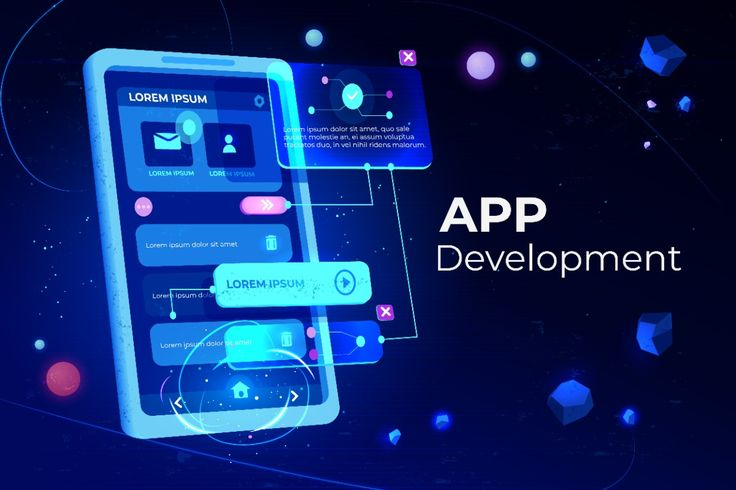
INTRODUCTION:
Android flexible application headway has transformed into a major piece of the mechanized world, as mobile phones continue to run ordinary presence. The Android working system, made by Google, powers billions of contraptions all over the planet, spreading the word about it one of the most well stages for flexible application improvement. In this article, we will examine the key parts, instruments, and best practices drew in with Android application improvement, and why it is a critical skill for fashioners.
What is Android Mobile App Development?
Android adaptable application headway suggests the technique engaged with making programming applications that unexpected spike sought after for Android-controlled devices, for instance, PDAs, tablets, and wearables. Android applications are in a general sense manufactured using Java, Kotlin, or C++ programming tongues, with Android Studio being the power Consolidated Headway Environment (IDE) for application improvement.
The improvement cycle includes different stages like planning the UI, carrying out highlights, and testing the application for similarity and execution. Android applications can go from straightforward instruments and utilities to complex, include rich applications, for example, online entertainment stages, internet business applications, and gaming applications.
Why Choose Android for App Development?
There are a few justifications for why Android is a favored stage for versatile application improvement:
- Wide Market Reach: Android has a monstrous client base, with billions of dynamic gadgets across the globe. This enormous client segment furnishes engineers with a significant market for their applications.
- Open Source Nature: Android is an open-source stage, and that implies designers approach its source code and can change and tweak it as per their necessities. This takes into account more prominent adaptability and development.
- Google Play Store: The Android environment is upheld by the Google Play Store, the biggest application commercial center on the planet. It gives designers a simple to-utilize stage to disseminate their applications to a large number of clients.
- Customization and Flexibility: Android offers broad customization choices for application engineers. From changing the UI to coordinating high level elements, Android gives adaptability to fabricate applications that take care of explicit client needs.
- Growing Demand: With the steadily expanding dependence on versatile applications in different businesses (e.g., diversion, schooling, wellbeing, and money), there is a developing interest for gifted Android designers.
Key Tools for Android App Development
To get everything rolling with Android portable application advancement, designers need the right arrangement of instruments and innovations. A portion of the fundamental devices include:
1. Android Studio
Android Studio is the authority IDE for Android application improvement. It is outfitted with different instruments and elements to smooth out the improvement interaction, like a code manager, emulator, and troubleshooting devices. It maintains both Java and Kotlin programming lingos and gives a characteristic place of communication to building and testing Android applications.
2. Kotlin
Kotlin is a cutting edge programming language created by JetBrains and is formally upheld by Google for Android improvement. It is intended to be completely interoperable with Java, yet with a more compact and expressive language structure. Kotlin works on code and diminishes the probability of mistakes, settling on it a favored decision for the majority Android engineers.
3. Java
Java has been the foundation of Android improvement for a long time. While Kotlin is acquiring ubiquity, Java stays a vigorous language for building Android applications. It is very much upheld, has an enormous engineer local area, and offers great libraries and systems for Android improvement.
4. Firebase
Firebase is a phase made by Google that gives a collection of backend organizations for flexible application improvement. It incorporates continuous information bases, client validation, distributed storage, and examination devices. Firebase is broadly utilized by Android engineers to oversee application information and further develop client experience.
5. Android SDK
The Android Programming Improvement Unit (SDK) is an assortment of devices and libraries expected to fabricate Android applications. It incorporates all that from investigating apparatuses to libraries for overseeing UI parts and coordinating gadget sensors. The SDK is fundamental for building applications that work flawlessly on Android gadgets.
Steps in Android Mobile App Development
Android application advancement includes a few stages, from ideation to the send off of the application. Coming up next are the general phases of Android application advancement:
1. Idea and Conceptualization
The most vital phase in Android application improvement is characterizing the thought or idea driving the application. This includes understanding the interest group, recognizing trouble spots, and making an answer that tends to those necessities. A strong thought will assist with directing the whole improvement process.
2. App Design
Planning the UI (UI) and client experience (UX) is a urgent piece of versatile application improvement. The application ought to be not difficult to utilize, outwardly engaging, and instinctive. Android utilizes Material Plan, a bunch of plan rules by Google, to guarantee consistency and a smooth client experience across applications.
3. App Development
At this stage, engineers start composing the code for the application. Contingent upon the prerequisites, they use Java or Kotlin to carry out the application’s elements. The improvement interaction incorporates setting up the application’s engineering, making the backend (if essential), and coordinating outsider APIs or administrations.
4. Testing
Testing is a fundamental stage in the application advancement process. Engineers run different tests to distinguish and fix bugs, blunders, and execution issues. Android Studio offers a strong emulator to test applications on different virtual gadgets, and designers likewise perform genuine testing on real gadgets to guarantee similarity.
5. Deployment
Once the application is prepared and completely tried, the time has come to send it. Engineers distribute their application to the Google Play Store, where it opens up for clients to download. The application should comply with Google’s strategies and rules to guarantee smooth endorsement and posting on the Play Store.
6. Maintenance and Updates
Application improvement doesn’t end after arrangement. Engineers need to screen client input, track execution measurements, and routinely update the application to fix bugs, add new elements, or further develop security. Nonstop improvement is vital to keeping clients drew in and fulfilled.
Best Practices for Android App Development
- Optimize for Performance: Execution is basic for client fulfillment. Guarantee the application stacks rapidly, moves along as planned, and limits battery use. Utilize Android’s implicit profiling instruments to recognize and determine execution bottlenecks.
- Follow Material Design Guidelines: Material Plan gives a predictable look and feel across Android applications. Keeping these rules guarantees that your application complies with Google’s plan guidelines and further develops ease of use.
- Implement Secure Coding Practices: Portable applications store touchy client information, so security is a main concern. Use encryption, secure confirmation techniques, and approve contribution to forestall normal weaknesses, for example, SQL infusion and cross-site prearranging (XSS).
- Support Multiple Devices and Screen Sizes: Android gadgets come in many shapes and sizes, so it is essential to plan responsive designs that adjust to various screen goals. Consider testing your application on different gadgets to guarantee similarity.
- Use Analytics and Feedback: Coordinate examination devices, like Google Investigation or Firebase, to follow client conduct and application execution. Gathering client criticism through audits or overviews assists designers with recognizing regions for development.
Conclusion
Android portable application improvement offers vast open doors for development and innovativeness. With an enormous client base, strong improvement instruments, and an adaptable stage, Android gives a unique climate to building versatile applications. By following prescribed procedures and utilizing the right advances, designers can make top caliber, easy to use applications that address the issues of the present computerized world.
Whether you’re simply beginning or are an accomplished designer, dominating Android application improvement is an important expertise that can prompt energizing vocation possibilities and the opportunity to universally influence a huge number of clients.


